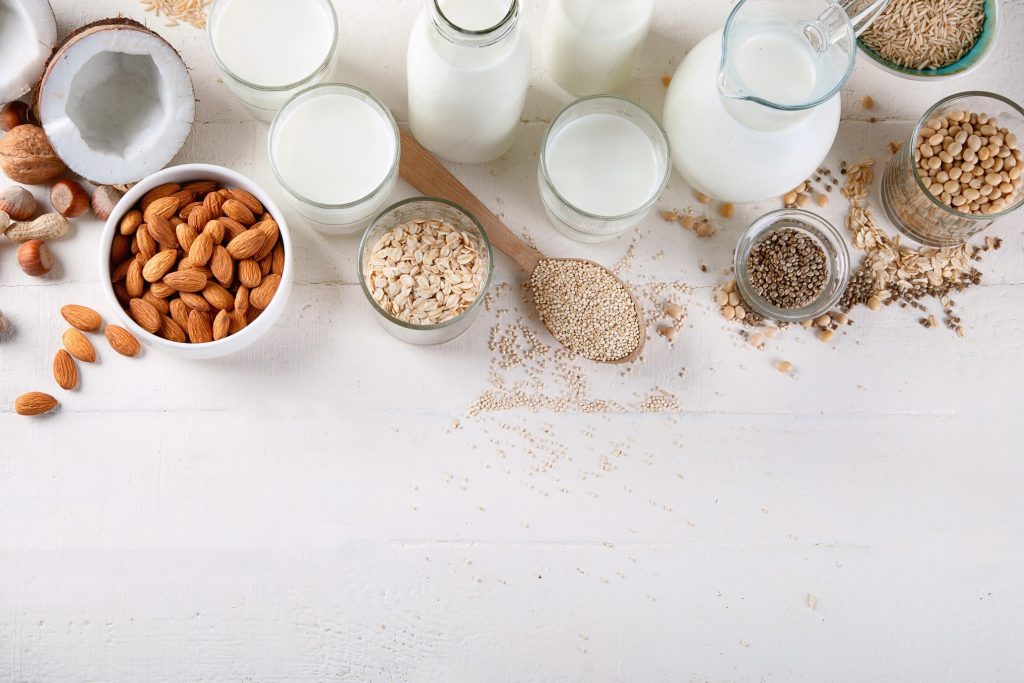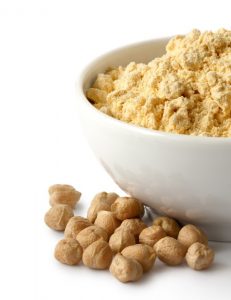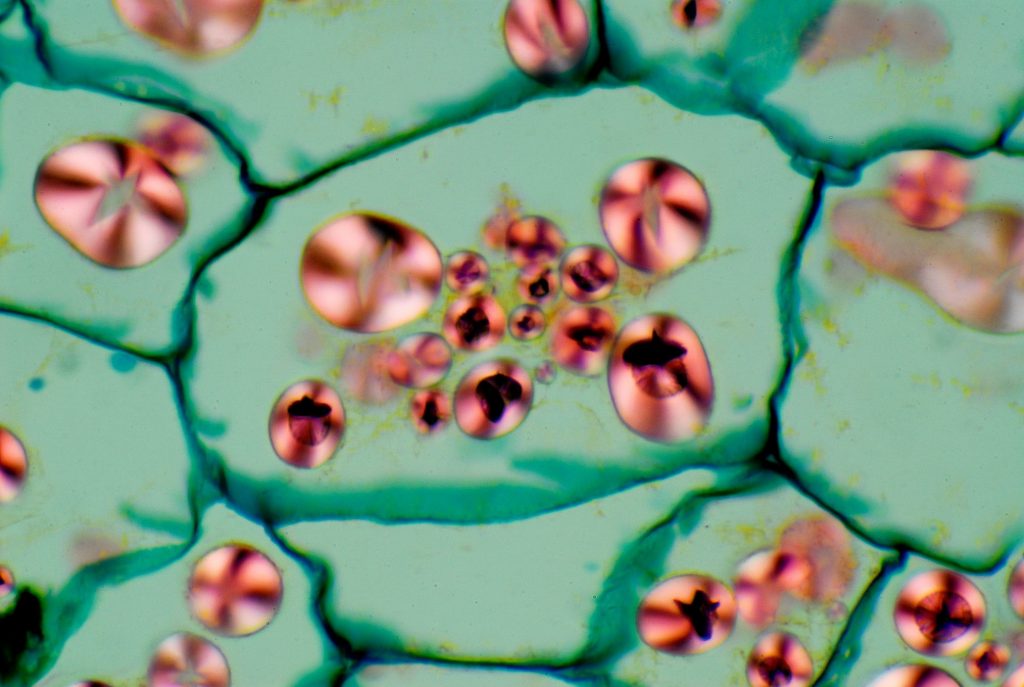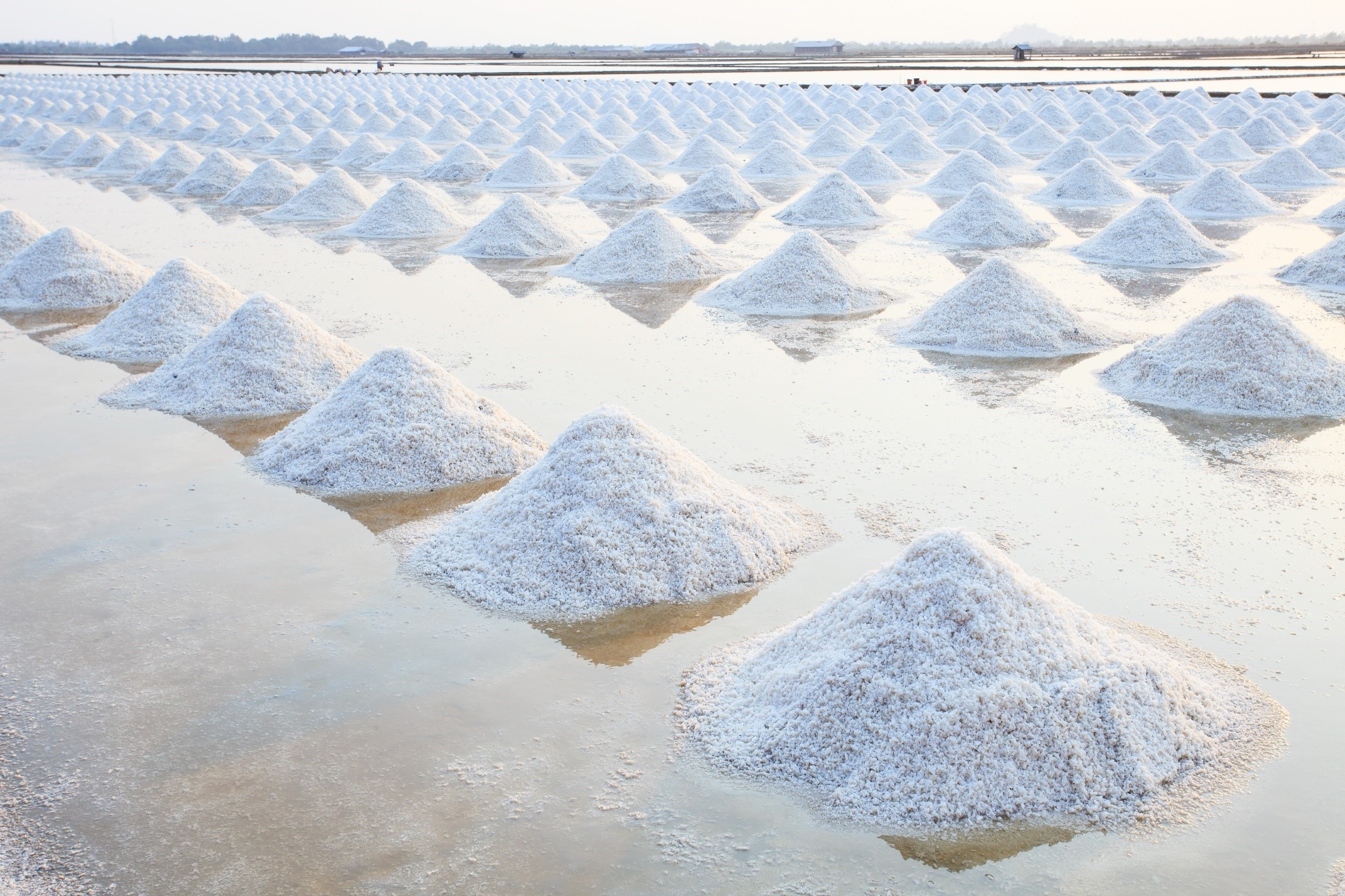Why is formulating with plant proteins harder than using dairy proteins, and how have plant proteins improved in recent years? In this article we will review challenges and advancements in replacing dairy proteins with plant proteins.

Animal-derived proteins such as dairy proteins have been used broadly for many years as they have many nutritional and techno-functional benefits (binding, gel-forming, foaming, etc). Animal-derived proteins are generally high-quality protein sources because they provide all the essential amino acids our body needs. Moreover, they have good techno-functionality, they are easy to formulate with and deliver a clean taste.
However, an increasing focusing on sustainability has led to a growth in the plant-based food market. This is shifting the focus to plant proteins despite the many challenges remain with this protein source in food and beverage applications.
From a nutritional perspective, most protein sources are deficient in some essential amino acids and are, as such, incomplete protein sources. The strategy to improve the nutritional profile of plant protein was already discussed in a previous KHNI Article: How Can We Optimise Plant Proteins?, such as combining different protein sources to deliver a complete plant protein solution with all essential amino-acids.
Beyond nutrition, other aspects very important for food and beverage manufacturers such as solubility, taste and process-ability remain challenging and must be considered.
How can we fill the gap between animal and plant proteins to develop nutritionally balanced and tasty foods?
Challenges and advancements in formulating with plant protein: functionality in foods and beverages

Some of the challenges in using plant proteins in food and beverage applications are a result of the different processing techniques used to isolate plant proteins from a raw material (e.g. peas or pea flour) compared to those used to isolate animal proteins. These can include solubility, texture, and dry mouthfeel depending on application.
Many plant proteins have poor solubility in water. Good solubility is critical for applications with high water content (beverages, dairy alternatives, sauces & soups, etc.) since protein solubility is required for a visual aspect (no phase separation), low viscosity and good mouthfeel (smoothness, creaminess, low graininess/sandiness).
For products with low water content (bakery, snacks, etc.), challenges also exist, as some plant proteins yield dryness and hard texture, which are often associated with sensory issues.
Processing differences between plant and animal proteins result in different functional properties
For plant proteins, processes used for the generation of the protein ingredients (e.g. pea protein concentrates) often occur after starch/fibre extraction. Early or excessive protein denaturation can happen during starch or fibre extraction, meaning that plant proteins can lose in their native techno-functional properties (solubility, water biding properties, gelling, etc.) before they reach the protein extraction step.

Potato starch cell – starch isolation is often the first processing step for plants, which can negatively impact the functionality of proteins extracted afterwards
In contrast, for animal-derived proteins, the focus of processing is generally the manufacture of the protein ingredient. As a result, protein denaturation is minimised, and native techno-functional properties are preserved.
Plant protein ingredients are generally produced following two main processes:
-
-
- Dry processing (milling and air classification) – A process based on mechanical separation of proteins from starch granules. Protein separation is based on size/density difference with other components.
- Wet processing – Protein suspension in aqueous medium. Protein separation from other components is generally based on differential solubility at various pH values (isoelectric precipitation), ionic strength (salting-out effect) sometimes associated with separation based on differential molecular mass (membrane separation by dialysis and/or ultrafiltration).
-
Wet processing is more severe and has a bigger impact on plant-protein techno-functionality, making protein ingredients generated through this process more difficult to formulate with.
How has processing of plant protein improved to enable better plant-based foods and beverages?
Several strategies can be employed to improve techno-functional properties of plant proteins ingredients. Those are often focused on modifying solubility or unfolding plant proteins to expose their hydrophobic groups to improve gelling, emulsifying and aeration properties. The processes used to modify the techno-functional properties of plant proteins are classified under physical, chemical or biological treatments (Table 1). Physical processes can be used in conjunction with chemical and or biological processes to further modify selected techno-functional properties of plant proteins (Akharume et al., 2020).
Table 1. Processes used to modify techno-functional properties of plant proteins (For information on these techniques, see Akharume et al., 2020 & Nasrabadi et al., 2021)
With these improvements, many foods which were traditionally manufactured with animal-derived proteins are now considered for plant-based options (beverages, dairy, ice-cream, snacks, etc.). The key techno-functional properties required for protein ingredients vary depending on the food product and some sources are more suitable than others (Table 2).
Choosing the right protein source
Table 2. Examples of protein functional properties needed in different food and beverage applications.
Challenges and advancements in formulating with plant protein: flavour and mouthfeel
 In addition to having better functional properties than plant proteins, dairy proteins also have more positive taste profiles and mouthfeel for use in food and beverage. This is due to gentle processing conditions which prevent excessive denaturation and the development of off-notes (e.g., low heat treatment conditions) compared to the processing for plant proteins described above.
In addition to having better functional properties than plant proteins, dairy proteins also have more positive taste profiles and mouthfeel for use in food and beverage. This is due to gentle processing conditions which prevent excessive denaturation and the development of off-notes (e.g., low heat treatment conditions) compared to the processing for plant proteins described above.
Plant protein ingredients on the other hand are generally associated with undesirable sensory attributes (green, bitter, astringent, etc.) in addition to their gritty texture which can cause a grainy mouthfeel (Saint-Eve et al., 2019). Other parameters such as processing history (e.g., heat treatment, hydrolysis, milling, etc.) can also modify their organoleptic properties. The sensorial properties of plant proteins also vary depending on their botanical origin and state (intact vs. hydrolyzed, Table 3).
Sensory issues to overcome in different plant proteins
Table 3. Lexicon of sensory descriptors used to describe commercial intact and hydrolyzed plant protein ingredients (Kerry internal data)
There are different solutions available to minimize these sensory defects. Two main avenues can be used alone or in combination to improve the sensory profile of plant proteins:
-
-
- Flavour and taste masking technologies are used to cover taste and flavour compounds responsible for an unbalanced profile. Their inclusion can therefore decrease off-notes and taste defects of plant proteins.
- Processing such as fermentation and solvent extraction may help reduce sensory defects linked to flavour and taste of plant proteins. Other technologies involving particle size reduction, partial protein hydrolysis and cross-linking are used to improve mouthfeel (reduction of sandiness/grittiness and/or viscosity), more particularly in foods with high water content. Particle size reduction and hydrolysis may negatively impact the taste and flavour of the protein either by increasing the surface area (particle size reduction) or releasing peptides and free amino acids which have bitter, savory taste profiles.
-
Plant and dairy hybrids: a strategy focusing on flexitarian consumers
Today, plant proteins are not a focus only for vegan and vegetarians but also for consumers who are still consuming animal protein but are looking to bring a better balance between both sources by incorporating more plant-based options in their diets. Hybrid foods and beverages (containing both animal and plant proteins) are a useful tool in diet transition, helping to bridge the gap between the two markets.
There is an opportunity for food and beverage manufacturers to develop hybrid products targeting this consumer category.
Combination of plant and animal proteins can allow to achieve synergistic benefits by taking the best of both worlds. There are many benefits with using hybrid proteins (e.g. a mix of dairy and plant proteins) over plant proteins alone:
-
-
- Better solubility: as dairy proteins are more soluble than plant proteins, combining both sources will enhance the overall solubility.
- Reduced grittiness: dairy proteins are associated with smoothness and creaminess, combining them with plant proteins can help to significantly reduce grittiness perception of plant proteins.
- Superior taste: the sensory profile of dairy proteins is in most cases desirable. Plant protein sources can bring unpleasant taste (bitter, earthy, beany and astringent) which has become a major obstacle for consumers’ product purchase. Hybrid foods could also offer a solution here to improve palatability of plant-based food and beverages by reducing these off-notes.
- Higher protein content: several plant-based food and beverages have significantly lower protein content than their animal-derived equivalent. This is because of the formulation challenges present in plant proteins mentioned above. By combining plant and milk proteins, food manufacturers can boost the protein content of their final products.
- Better nutritional profile: from a nutrition perspective, it is important to emphasize the benefits of having a varied diet that includes both animal and plant-based foods. Plant-based foods can come with “positive” co-passengers like fibre, vitamins (folate, B12, D) and minerals (e.g. iron, zinc, calcium). On their side, dairy proteins offer high nutritional value (high quality protein, calcium, potassium, etc). It makes sense to say that innovation through the design of hybrid foods could therefore bring the best of both worlds and be used as a strategy to improve the nutrition of a product.
-
The are many options and strategies available to improve the profile of plant-protein, making them a suitable candidate for protein-fortified food and beverage product development. The gap between dairy and plant protein is getting smaller, bringing endless opportunities for food and beverage manufacturers. It is evident that over the coming years more protein-fortified products with plant protein ingredients will be present on store shelves.
Contributors:
-
References
Akharume, F. U., Aluko, R. E., & Adedeji, A. A. (2021). Modification of plant proteins for improved functionality: A review. Comprehensive Reviews in Food Science and Food Safety, 20, 198-224.
Gorissen, S. H., Crombag, J. J., Senden, J. M., Waterval, W. H., Bierau, J., Verdijk, L. B., & van Loon, L. J. (2018). Protein content and amino acid composition of commercially available plant-based protein isolates. Amino acids, 50, 1685-1695.
Jiang, Z.-Q. M.-j.-M.-S. (2016). Faba bean flavour and technological property improvement by thermal pre-treatments. LWT – Food Science and Technology, 68, 295-305.
Mellentin J (2020) Hybrid strategy – harnessing the health halo of plants. New Nutrition Business.
Multari, S. S. (2015). Potential of fava bean as future protein supply to partially replace meat intake in the human diet. Comprehensive Reviews in Food Science and Food Safety, 14, 511-522.
Nasrabadi, M. N., Doost, A. S., & Mezzenga, R. (2021). Modification approaches of plant-based proteins to improve their techno-functionality and use in food products. Food Hydrocolloids, 118, 106789.
Nosworthy, M. T. (2017). Does the concentration, isolation, or deflavoring of pea, lentil, and faba bean protein alter protein quality? Cereal Foods World, 62, 139-142.
Saint‐Eve, A., Granda, P., Legay, G., Cuvelier, G., & Delarue, J. (2019). Consumer acceptance and sensory drivers of liking for high plant protein snacks. Journal of the Science of Food and Agriculture, 99, 3983-3991.
Sha, L., Xiong, Y-L. (2020). Plant protein-based alternatives of reconstructed meat: Science, technology, and challenges. Trends in Food Science & Technology, 102, 51-61,
Singh, N. (2017). Pulses: an overview. Journal of Food Science &Technology, 54, 853-857
Singhal, A. (2015). The effect of genotype and the environment on the Physicochemical and fucntionnal attributes of Faba bean protein isolate. (Doctoral dissertation, University of Saskatchewan).
Vioque, J.A.-C. (2012). Nutritional and functional properties of Vicia faba protein isolates and isolates and related fractions. Food Chemistry, 132, 67-72.

 Alice holds an Engineering Degree in Food Science & Technology (ENSBANA, Dijon, France), MSc in Food Science (ENSBANA) and a PhD in Food Science (Danone Vitapole Palaiseau & ENSBANA). Alice has published over 70 peer-reviewed publications in the generation, isolation and characterisation of bioactive peptides from Dairy, Plant & Edible insect proteins as well as in the flavour characterisation of dairy products.
Alice holds an Engineering Degree in Food Science & Technology (ENSBANA, Dijon, France), MSc in Food Science (ENSBANA) and a PhD in Food Science (Danone Vitapole Palaiseau & ENSBANA). Alice has published over 70 peer-reviewed publications in the generation, isolation and characterisation of bioactive peptides from Dairy, Plant & Edible insect proteins as well as in the flavour characterisation of dairy products.  Mindy Leveille, MSc joined Kerry Taste & Nutrition in 2017 as part of the health and nutrition division. She is Currently working as Global Strategic Marketing Manager for Kerry’s protein business and is passionate about health and nutrition. She enjoys using this passion to support the development of innovative products that enable consumers to take a more proactive approach to their long-term health.
Mindy Leveille, MSc joined Kerry Taste & Nutrition in 2017 as part of the health and nutrition division. She is Currently working as Global Strategic Marketing Manager for Kerry’s protein business and is passionate about health and nutrition. She enjoys using this passion to support the development of innovative products that enable consumers to take a more proactive approach to their long-term health. 

